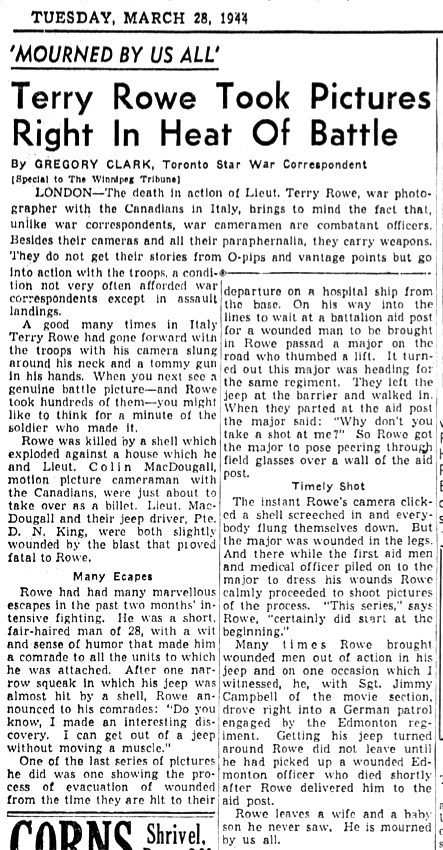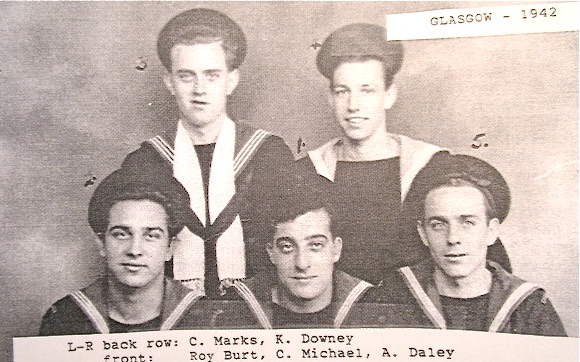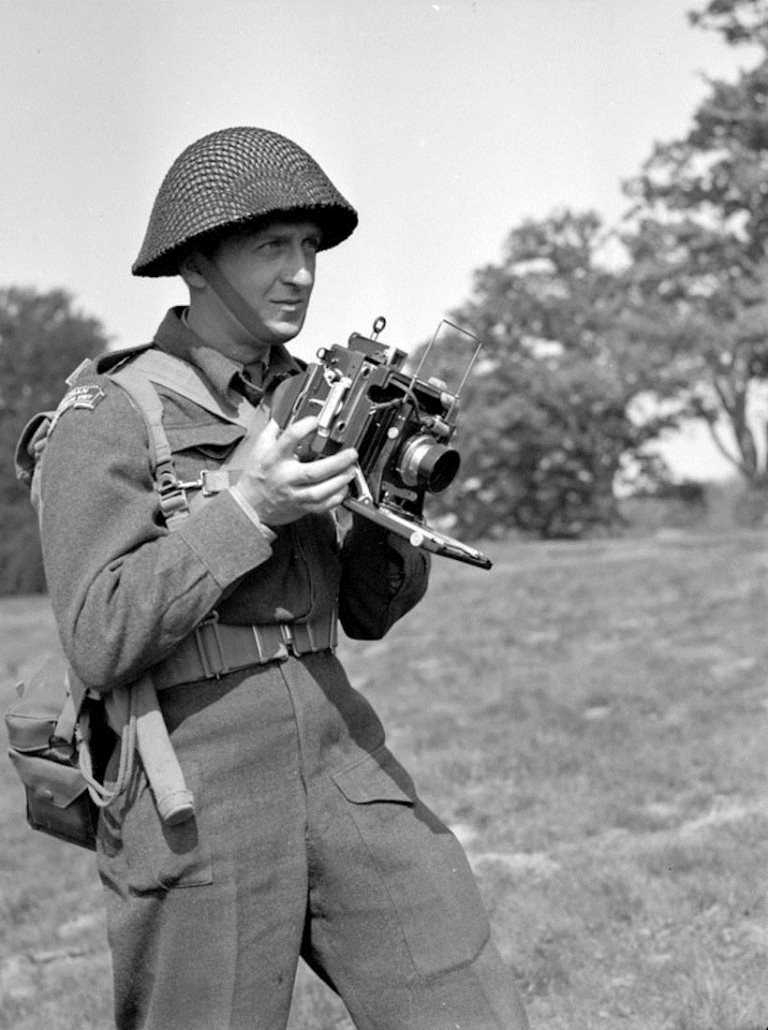The Search for the "Local Man" who 'Shot' Dieppe Continues
While We Easily Learn More re Canadian Photographers...
News clip re Frank Royal, "Canadian Army photographer."
Found in The Winnipeg Tribune, August 28, 1942
Introduction:
Though the task of learning more about a particular WWII photographer - and finding samples of his work - shouldn't be impossible, thanks to Google and other resources,
I'm still searching for Frank Royal's photos taken at Dieppe and at earlier combined operations training exercises (some in which my father was likely involved). Surely I won't come up empty handed (!) re legitimate photos, and while searching there will be other rewarding finds.For example, a link to Library and Archives Canada (LAC), provided in the first post of this series (
Research: Canadian WWII Photographers, Videographers, Films (1)), has a
SEARCH DATABASE feature enabling us to make many discoveries related to WWII, Combined Operations, the Canadians in Combined Ops (C.O.), etc.
I typed in '
landing craft' and found several photographs of C.O. activities. The first below was shared in the previous post:
Canadians in Combined Operations were involved in many landing rehearsals
Image 59 (link) - Canadian infantrymen disembarking from a landing craft during
a training exercise before Operation JUBILEE, the raid on Dieppe, France.
England, August 1942. MIKAN number - 3194482
Image 1810 - Infantrymen of an unidentified Canadian Scottish regiment in a
landing craft during an assault landing exercise, England, ca. 14-26 April 1942.
Photo - Library and Archives Canada, A113243. MIKAN number 3519167
Image 1783 - Infantrymen of the Royal 22e Régiment boarding a
Landing Craft Infantry (LCI) to move 150 miles along the coast,
Catanzaro Marina, Italy, 16 September 1943. MIKAN 3516224
Landing craft en route to Dieppe, during Operation Jubilee, 19 Aug.1942.
Photographer: Unknown. MIKAN Number:
3192395 Item Number: 43
[Could this have been taken by Frank Royal? Help Wanted]

Leading Seaman (L.S.) J.B. Cloke (left) of the Royal Canadian Navy Beach
Commandos talking with (L.S.) J. Forsyth aboard a Landing Craft Infantry
(Large) [LCI(l)] en route to France, 20 July 1944. Photographer: Arless,
Richard Graham. MIKAN Number:
3201129 Item Number: 160
Editor's Note: Leading Seaman Cloke's shoulder patch (above) is an early version, with the rifle pointing to the right. Later versions pointed to the left.
Earlier versions of shoulder patches:
A gift from former curator of Combined Ops Museum, Inveraray
Navy hammock from collection at Navy Museum, Esquimalt, Vancouver Island
S/Lt. Davey Rodgers added names of members of 80th Canadian Flotilla of
Landing Craft, including D. Harrison, my father
C.O. patch on baseball jackets, Comox, Vancouver Island
D. Harrison (front, first on left) and RCNVR/C.Ops mates
Later versions of Combined Operations shoulder patch:
Navy veterans stories
One last discovery from Library and Archives Canada (LAC) follows:
Title: Unidentified Canadian infantrymen taking part in a Combined Operations
training exercise, Inveraray, Scotland, 27 August 1943. Photo: Game, George A.
Inveraray, Scotland, August 27, 1943. MIKAN Number:
3203273 Item No. 302
Additional, informative photographs and links to videos can be found with the help of an article entitled
Scooping the War (September 12, 2016). A short excerpt and a few of the accompanying photographs follow. Still no Frank Royal!
For the cameramen of the Second World War, half the battle was about making their film the first to hit the newsreels.Lieutenant Donald I. Grant of the Canadian Army Film and Photo Unit,
who holds an Anniversary Speed Graphic Camera, England, 11 May, 1944
Lt. L.F. Dubervill, Canada Dept. of National Defence (DND) LAC, PA-137026
“We scooped everybody!” wrote Lieutenant Jack McDougall, head of the Canadian Army Film Unit (CAFU), to the Canadian cameramen in Sicily in July 1943.
McDougall’s exultant declaration celebrated a remarkable moment in film coverage of the Second World War — dramatic footage of Canadian troops landing on the beaches of Sicily.
The CAFU filmed and photographed the Canadian army during the war, documenting day-to-day activities and battles to create a visual record. These films and photographs eventually numbered some 1.5-million feet of footage and over sixty thousand still photos.
They matter a lot to us today, as they are used in countless books, documentaries, and other cultural products. But at the time, what propelled the unit was more immediate — getting newsworthy photos and films of the Canadian Army back to the newspapers and newsreels as quickly as possible.
What drove the cameramen was getting the scoop. (Scooping the War, Sarah Cook)
Infantrymen of the 48th Highlanders of Canada dealing with a German
counterattack, San Leonardo di Ortona, Italy, 10 December 1943.
F. J. Whitcombe, Canada DND, LAC, PA-166566
Lieutenant Ken Bell of the Canadian Army Film and Photo Unit digging a
slit trench in the Normandy beachhead, France, 10 June 1944.
Photo Credit - Canada DND, LAC, PA-131443
Lt. I. Macdonald (with binoculars) of the 48th Highlanders of Canada preparing
to give the order to infantrymen of his platoon, San Leonardo di Ortona, Italy,
10 Dec. 1943. Lt. F. G. Whitcombe, Canada DND, LCA, PA-163411
Photographers and videographers not only dug their own trenches but suffered the ultimate consequences of war alongside Canadian troops:
Funeral of Sergeant Jimmie Campbell of the Canadian Army
Film and Photo Unit, Fleur-sur-Orne, France, 22 July 1944.
Photo - Lt. Ken Bell. Canada DND, LAC, PA-130160
The article provides a link to a collection of newsreels (as found on YouTube) produced by
The Canadian Army Film Unit. (There are scores of them, each covering various topics. Happy hunting!)
On YouTube, each newsreel comes with an outline of what is profiled during each film segment. E.g., on Newsreel 96 we find the following helpful description (so, if you're looking for something in particular...):
96.1 “Queen Elizabeth”* Arrives in Canada - The Queen Elizabeth passenger ship on its way to Halifax; with returning soldiers; boat drill; dinner; berths; rough seas; Halifax Harbour; the Toronto Scottish disembark; a train in motion; Les Fusiliers Mont-Royal march to a baseball stadium in Montreal where Archbishop Joseph Charbonneau and Brigadier J. G. Gauvreau, former commanding officer of the regiment, preside over a religious ceremony; families greet soldiers.
*my father arrived home in December, 1943, aboard the Aquitania
96.2 Dominion Swells Meat Exports to the UK - Activities at a pig farm; record keeping; pigs at a test station; Ponoka livestock trains are loaded; packing plant; cutting the meat; packing the meat into containers; refrigerator car.
96.3 Round-Up Time in Germany - Troops of the Nova Scotia Highlanders are briefed on procedures for searching the occupied German countryside; a German family is questioned; a bootlegger is caught; people whose identification papers are not in good order are put into a truck and taken to headquarters for further questioning.
96.4 Occupational Training for Amputation Cases - The staff of an office of the Canadian Department of Veterans Affairs creates wooden limbs; amputees exercise; amputees try out their new limbs; they are trained on their use; a man with z hook arms drives a car and enjoys a meal with his wife.
96.5 C.W.A.C. Band Tours Paris - The Canadian Women’s Army Corps parades on the Champs Elysées, with pipe leader Lillian Grant in the lead; General Georges P. Vanier, the Canadian Ambassador to France, takes the salute; the band members are received in the Tuileries Garden by General and Mrs. Vanier.
96.6 1945-46 Hockey Season Opens - The Toronto Maple Leafs play the Boston Bruins at Maple Leaf Gardens; Nick and Don Metz put on the padding while Frank McCool, the Toronto goalie, prepares for sensational saves. Private Ernest A. Smokey Smith, V.C. does face-off honours; six V.C. winners watch the game as guests of the Leafs; Conn Smythe and Major Frederick Albert Tilston watch the game. Tie game – 1-1.
More details re photographers, videographers, films, etc. soon to follow.



















































